

You are using an out of date browser. It may not display this or other websites correctly.
You should upgrade or use an alternative browser.
You should upgrade or use an alternative browser.
dbltree
Super Moderator
Did you run it through the PTO cone spreader or the Earthway?
The plot is narrow so I'll just be ginger with the Earthway! :way:
I used the Earthway Bag seeder...
Buckeye Springs
New Member
I have several hillside areas on my property that are not easily plowed or mowed due to the slope. The areas are being overtaken by variety of weeds.
I was planning on applying Roundup this summer to kill the weeds and plant Winter Rye and Clover in early September this year.
I will not be able to mow or replant these sloped areas easily on an annual basis. I would like to plant Winter Rye in the sloped areas only one time. Does Winter Rye grow as a perennial and self reseed after it gets established?
I was planning on applying Roundup this summer to kill the weeds and plant Winter Rye and Clover in early September this year.
I will not be able to mow or replant these sloped areas easily on an annual basis. I would like to plant Winter Rye in the sloped areas only one time. Does Winter Rye grow as a perennial and self reseed after it gets established?
dbltree
Super Moderator
I have several hillside areas on my property that are not easily plowed or mowed due to the slope. The areas are being overtaken by variety of weeds.
I was planning on applying Roundup this summer to kill the weeds and plant Winter Rye and Clover in early September this year.
I will not be able to mow or replant these sloped areas easily on an annual basis. I would like to plant Winter Rye in the sloped areas only one time. Does Winter Rye grow as a perennial and self reseed after it gets established?
No...rye is an annual that must be replanted each fall so only the clover would remain after the first planting in your case.
dbltree
Super Moderator
I took this pic to give an idea of how high winter rye can get by mid May
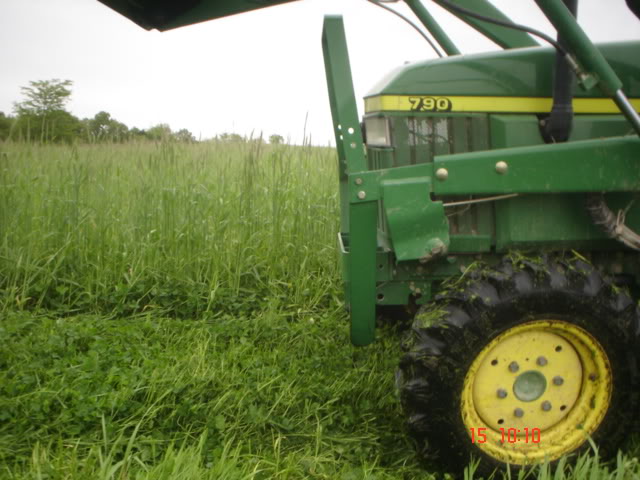
This is a seed head on winter rye
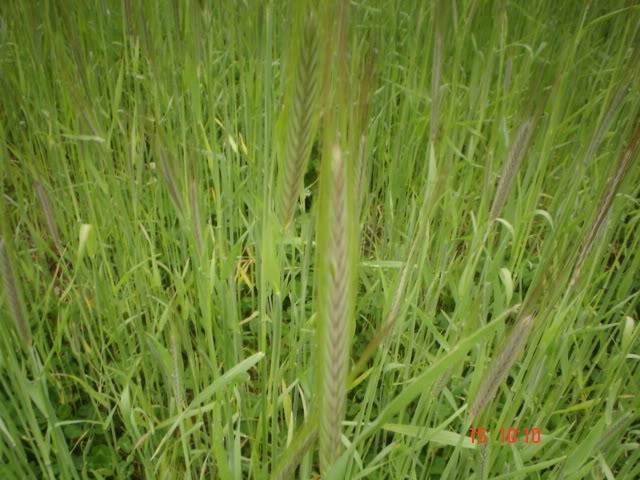
and this a seed head on winter triticale a cross between rye and wheat
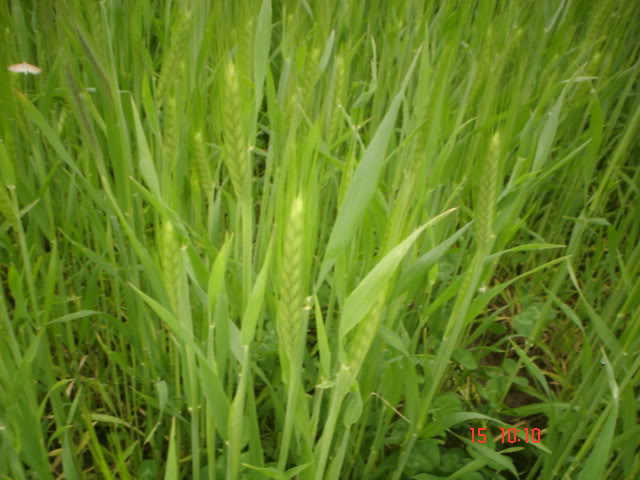
Even though weeds and grasses are growing rapidly everywhere else, they are noticeably missing in the winter rye

Because winter rye doesn't tiller like wheat (or triticale) is is a perfect environment to grow other plants such as clover which grows lush and thick in the weed free environment.
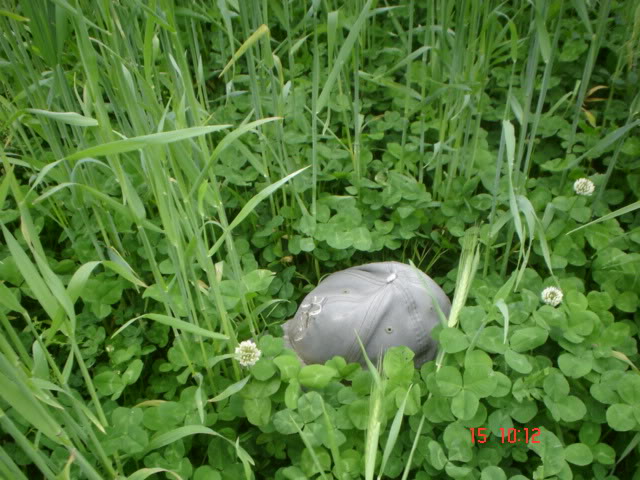
Because the winter tritcale takes on the tillering tendencies of wheat it quickly thickens and the clover cannot thrive in the shaded and competitive atmosphere.
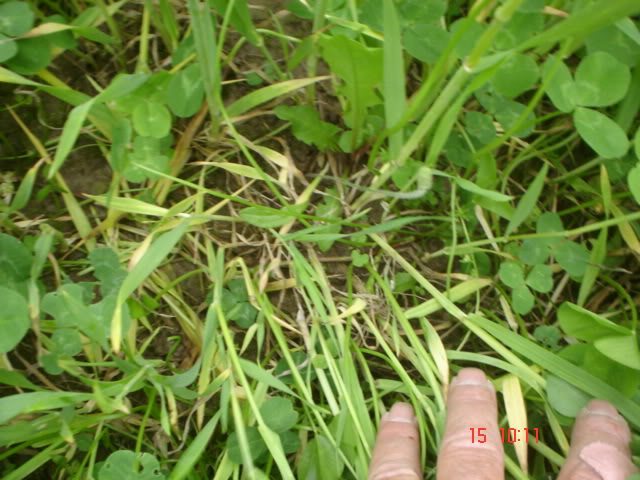
Hunter landowners have for years been given poor information simply because many biologists do not have a farm background and those that do were limited to a few crops they were familiar with.
We can quickly see however the advantages of winter rye over traditional wheat or even triticale and even more so the advantages of adding clovers to your fall rye planting.
The choice is yours...to have lush clover to provide an early spring food source as the rye matures
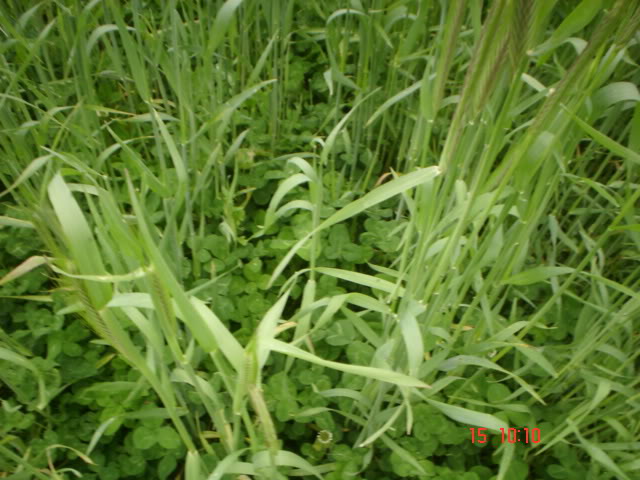
or plant annual clovers that will provide no grazing during a time when gestating/lactating does and winter starved bucks need it most.
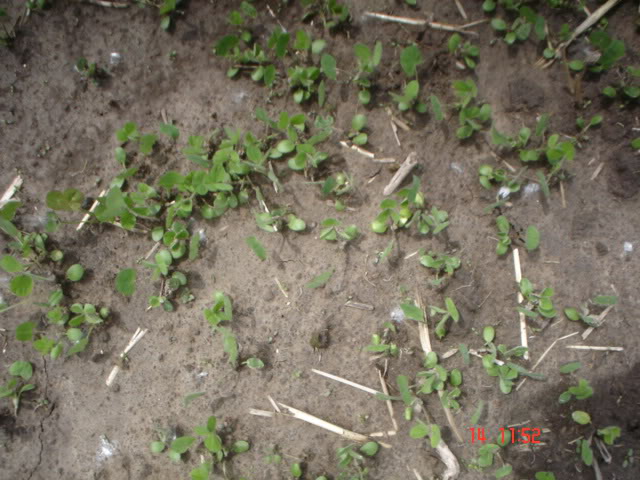
It is important to understand the compatibilities (or lack of it) among the seed types you plant and not be misled by big ads or old ways of thinking. Becoming knowledgeable about the things you plant will allow you provide year around high quality food sources and drastically lower your need for fertilizer and herbicides....

This is a seed head on winter rye

and this a seed head on winter triticale a cross between rye and wheat

Even though weeds and grasses are growing rapidly everywhere else, they are noticeably missing in the winter rye

Because winter rye doesn't tiller like wheat (or triticale) is is a perfect environment to grow other plants such as clover which grows lush and thick in the weed free environment.

Because the winter tritcale takes on the tillering tendencies of wheat it quickly thickens and the clover cannot thrive in the shaded and competitive atmosphere.

Hunter landowners have for years been given poor information simply because many biologists do not have a farm background and those that do were limited to a few crops they were familiar with.
We can quickly see however the advantages of winter rye over traditional wheat or even triticale and even more so the advantages of adding clovers to your fall rye planting.
The choice is yours...to have lush clover to provide an early spring food source as the rye matures

or plant annual clovers that will provide no grazing during a time when gestating/lactating does and winter starved bucks need it most.

It is important to understand the compatibilities (or lack of it) among the seed types you plant and not be misled by big ads or old ways of thinking. Becoming knowledgeable about the things you plant will allow you provide year around high quality food sources and drastically lower your need for fertilizer and herbicides....
Nontypcl1
Member
I trialed some greenfix chickling vetch this year as well. I took soil tests before planting and will take some after I till it under to see how much nitrogen it added. I used a bag seeder to broadcast in one area and used a wheel driven atv spreader on another. Broadcasting it didn't seem to effect it any except that the bag seeder was little more evenly distributed.
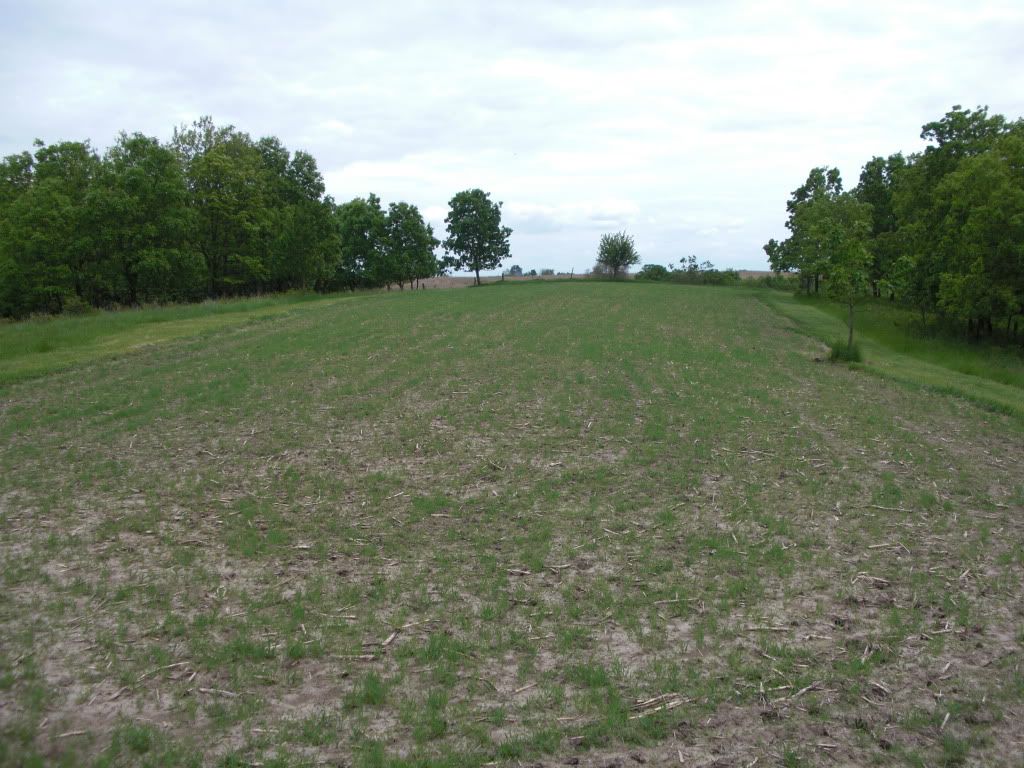
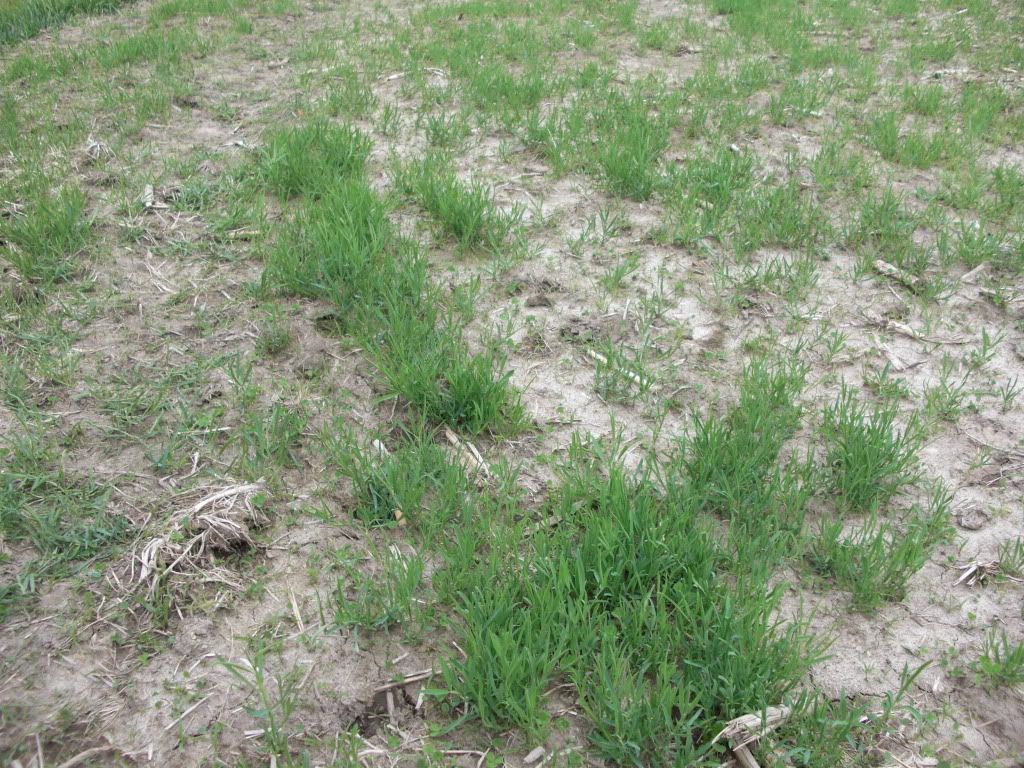
This area was planted 2 weeks earlier than the first two pics but didn't seem to make much difference with cool and wet weather we had.
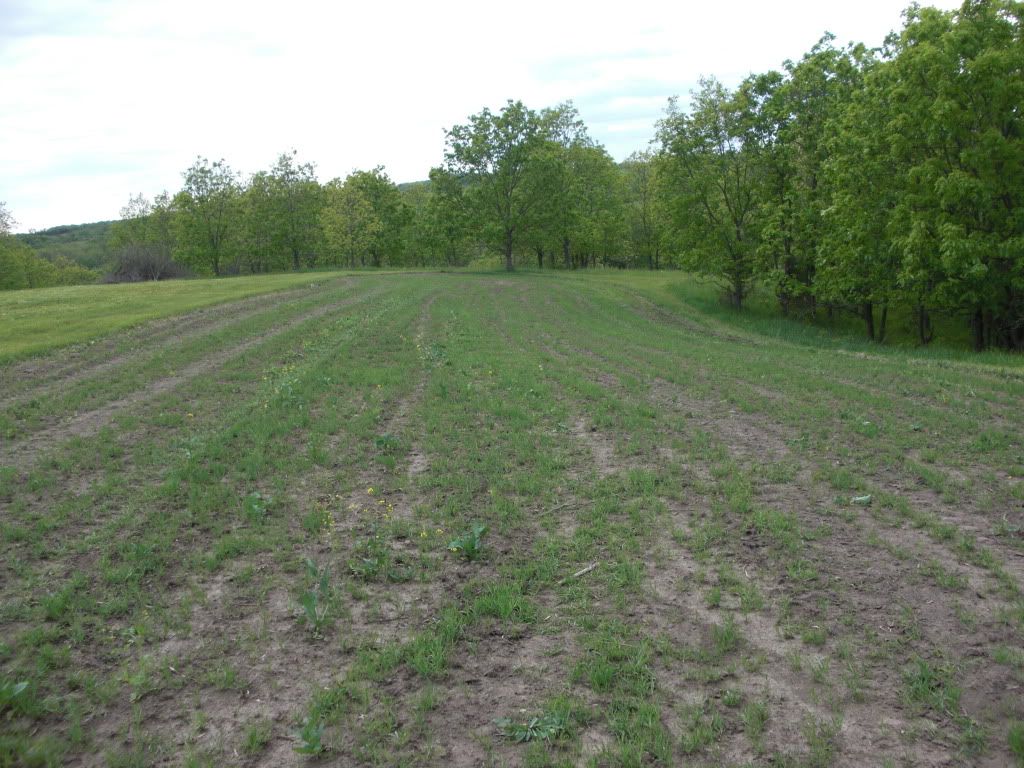
I believe I planted somewhere around 70lbs/acre. I used a harrow to cover the seed and then dropped the tiller down and let it free wheel to help make good seed soil contact. If I plant it again I will probably have to increase the planting rate a little. I noticed quite a bit of seed that didn't get covered but was still germinating on top of the soil.


This area was planted 2 weeks earlier than the first two pics but didn't seem to make much difference with cool and wet weather we had.

I believe I planted somewhere around 70lbs/acre. I used a harrow to cover the seed and then dropped the tiller down and let it free wheel to help make good seed soil contact. If I plant it again I will probably have to increase the planting rate a little. I noticed quite a bit of seed that didn't get covered but was still germinating on top of the soil.
dbltree
Super Moderator
Great pics! I like the chickling vetch so far!
This may be difficult to "test" for because the nitrogen will become available as the plant breaks down and decomposes and the length of time for that to transpire is highly variable.
You can test at different times however and compare to areas where the vetch was not grown.
Here are some links on soil testing for nitrogen
Soil Testing for Nitrogen
What is Illinois Soil Nitrogen Test?
What soil testing can tell you
Nitrogen Fertility
Value of soil profile nitrogen
Following legumes with nitrogen scavengers like winter rye and Groundhog Forage Radish is also helpful in holding the N in the soil longer but regardless free N from legumes is certainly better then expensive urea!
We'll be very interested in your test results!! :way:
I noticed the same thing and found that like peas the vetch seed will indeed germinate right on top!
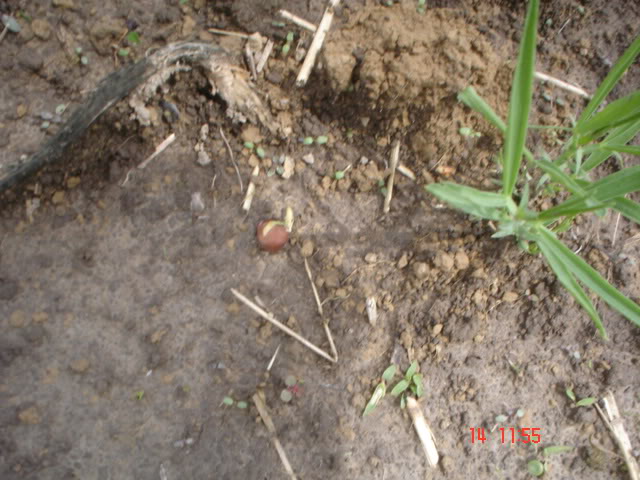
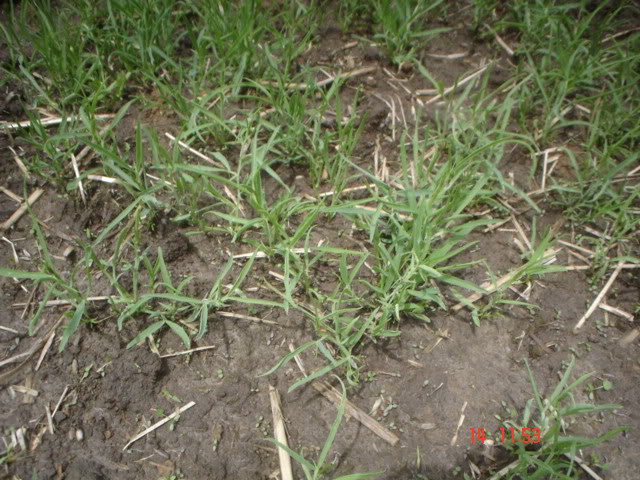
Thanks for sharing the pics and keep us posted!!
how much nitrogen it added
This may be difficult to "test" for because the nitrogen will become available as the plant breaks down and decomposes and the length of time for that to transpire is highly variable.
You can test at different times however and compare to areas where the vetch was not grown.
Here are some links on soil testing for nitrogen
Soil Testing for Nitrogen
What is Illinois Soil Nitrogen Test?
Soil tests typically do not test for nitrogen, because the levels are too volatile, though you can order an optional soil test for nitrate levels. (Nitrate testing is usually taken at the end of the growing season. High levels mean that you may not need to add nitrogen the following spring.)
What soil testing can tell you
Nitrogen soil testing
Nitrogen in soil is ephemeral in nature. The microbial facilitated interchange between forms continues even after samples have been removed from the site. Thus it is difficult to get the 'snapshot in time and space' desired from a soil test because of the changes in the sample itself.
Moreover, Mississippi is a warm and humid state. Microbial activity continues in the soil year-round thus a sample (if handled correctly) may only give an idea of N levels at the time of sampling. The N status may be completely different in that soil only a few days later because of the nonstop mineralization-immobilization processes (see discussion in text).
Nitrogen Fertility
Value of soil profile nitrogen
Following legumes with nitrogen scavengers like winter rye and Groundhog Forage Radish is also helpful in holding the N in the soil longer but regardless free N from legumes is certainly better then expensive urea!
We'll be very interested in your test results!! :way:
seed that didn't get covered but was still germinating on top of the soil.
I noticed the same thing and found that like peas the vetch seed will indeed germinate right on top!


Thanks for sharing the pics and keep us posted!!
dbltree
Super Moderator
Some great questions brought up on another forum that I wanted to address here as well...
NO...the clover is to thick and dominate and the rye will not re-seed, if it was rye alone and you disced it in late summer, then yes...you would in effect re-sow th rye (or any cereal grain)
Sown with clover however this will never happen!
If you look at the mix I plant...there is a method to my "madness"
Note that I don't plant the rye at maximum rates and the fact that I sow oats heavily, the rye will remain and do all the wonderful things it's capable of but the oats will freeze off leaving only the rye in the spring.
Meanwhile the combination of both rye and oats provided me with awesome fall grazing. Leave out the red clover and plant white clover, the result is the same.
Now...perhaps I have some how confused some folks on the need to clip rye in the spring (when clover was seeded with it.)
It's OPTIONAL...and here is a perfect example of rye/ladino clover plots posted earlier in this thread that was NEVER mowed!
April

May

July! Poof! Rye is done for and it does not come back!

Now if rye was sown at 150#'s per acre and it's extremely thick then clipping it off at 12-20" high to give the clover some light is a good idea but no worries if it grows back at first.
Eventually if will mature and just disappear leaving nothing but the clover.
Nothin' to get excited about friends...
dbltree,
when you just let the rye go like that in plots where you seeded clover with rye in the fall, doesn't the rye seed drop and reseed itself in late spring or early summer?!
NO...the clover is to thick and dominate and the rye will not re-seed, if it was rye alone and you disced it in late summer, then yes...you would in effect re-sow th rye (or any cereal grain)
Sown with clover however this will never happen!
Also, how many pounds per acres of winter rye do you seed if you are mixing it with either a white clover or alfalfa seeding in late summer/early fall planting? I would like as much rye as possible to limit weeds but not too much that is will crowd out the alfalfa or clover, what do you recommend? thanks! great info here
If you look at the mix I plant...there is a method to my "madness"
Winter rye 50-80#'s per acre (56#'s = a bushel)
Spring oats 80-120#'s per acre (32#'s = a bushel)
Austrian Winter Peas 20-80#'s per acre (4010 or 6040 field peas will work fine for 1/2 the price)
Red Clover 8-12#'s per acre
Groundhog Forage Radish 5#'s per acre
Note that I don't plant the rye at maximum rates and the fact that I sow oats heavily, the rye will remain and do all the wonderful things it's capable of but the oats will freeze off leaving only the rye in the spring.
Meanwhile the combination of both rye and oats provided me with awesome fall grazing. Leave out the red clover and plant white clover, the result is the same.
Now...perhaps I have some how confused some folks on the need to clip rye in the spring (when clover was seeded with it.)
It's OPTIONAL...and here is a perfect example of rye/ladino clover plots posted earlier in this thread that was NEVER mowed!
April

May

July! Poof! Rye is done for and it does not come back!

Now if rye was sown at 150#'s per acre and it's extremely thick then clipping it off at 12-20" high to give the clover some light is a good idea but no worries if it grows back at first.
Eventually if will mature and just disappear leaving nothing but the clover.
Nothin' to get excited about friends...
dbltree
Super Moderator
So...you took my advice and planted winter rye last fall but...you forgot to add clover...
No soup for you!
Clover completes the winter rye/forage pea fall planting and insures high quality food sources right on into summer, all the while fixing nitrogen for the next crop. The blossoms attract insects that turkey and pheasants chicks need to survive and if the rye is left standing it provides great cover for whitetails and fawns.
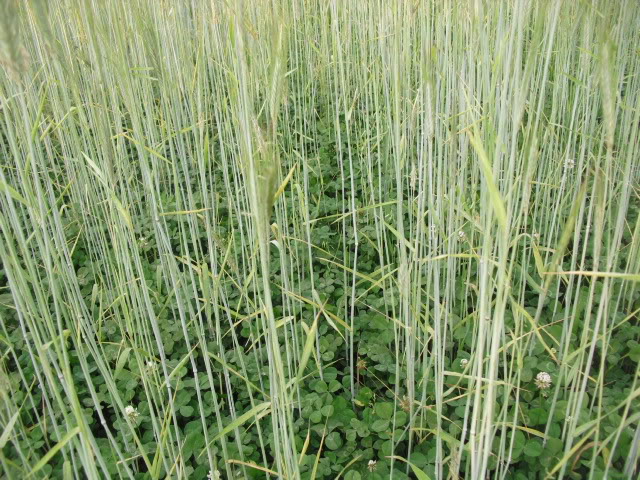
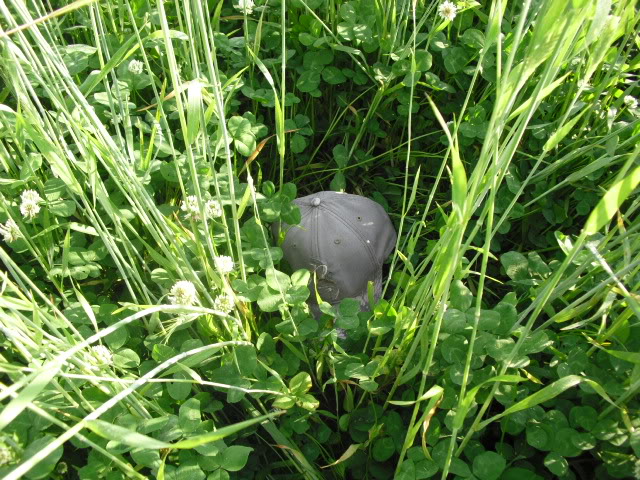
If clover was added then one may elect to leave the rye standing until it either falls on it's own or must be tilled under for the next crop. When it is at this stage it can be hard to disc or till under but when it dries out it's a piece of cake!

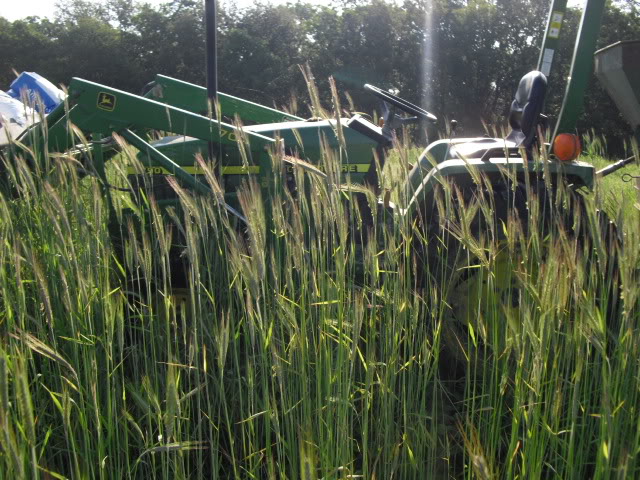
I mowed some and left some standing to show everyone comparison pics as the summer wears on
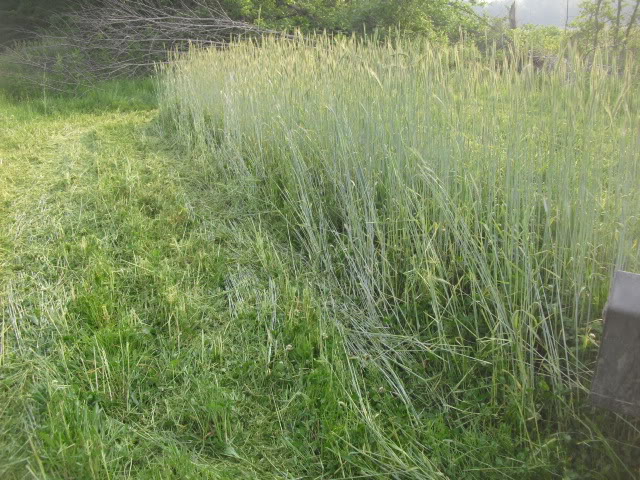
This is rye planted in October without clover on very very poor soil with no fertilizer or lime!
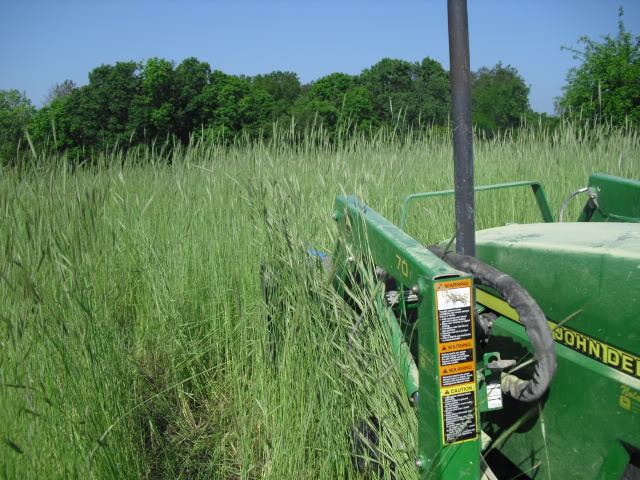
add white or red clover to your fall rye planting and you'll have a no hassle spring/summer source of feed even during springs when the rains seem to never cease!
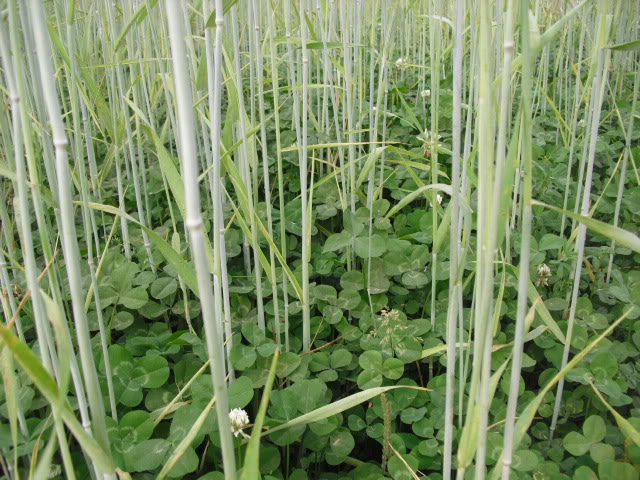
No soup for you!
Clover completes the winter rye/forage pea fall planting and insures high quality food sources right on into summer, all the while fixing nitrogen for the next crop. The blossoms attract insects that turkey and pheasants chicks need to survive and if the rye is left standing it provides great cover for whitetails and fawns.


If clover was added then one may elect to leave the rye standing until it either falls on it's own or must be tilled under for the next crop. When it is at this stage it can be hard to disc or till under but when it dries out it's a piece of cake!


I mowed some and left some standing to show everyone comparison pics as the summer wears on

This is rye planted in October without clover on very very poor soil with no fertilizer or lime!

add white or red clover to your fall rye planting and you'll have a no hassle spring/summer source of feed even during springs when the rains seem to never cease!

Dbltree,
This is the best info on food plots period.......thanks for your expertise.
I did your Rye, AWP and Clover mix and it looks unreal. Based on the picture of the N benefits, should I mow the clover when it heads out or leave it and till it under a couple weeks before I plant my fall food plots.
You also mentioned you are not a fan of plowing. I have an old offset disc plow that disc's the dirt at a slight angle and throws it to the side. And then I till it with my tiller before I seed to make a good seed bed. Why don't you like plowing?
Thanks Dbltree...............should call you Mr. Rye!!!!!!!!!!! I agree with all your rye thoughts!!!!!!!!!!!!!!!!!!!!!!!
This is the best info on food plots period.......thanks for your expertise.
I did your Rye, AWP and Clover mix and it looks unreal. Based on the picture of the N benefits, should I mow the clover when it heads out or leave it and till it under a couple weeks before I plant my fall food plots.
You also mentioned you are not a fan of plowing. I have an old offset disc plow that disc's the dirt at a slight angle and throws it to the side. And then I till it with my tiller before I seed to make a good seed bed. Why don't you like plowing?
Thanks Dbltree...............should call you Mr. Rye!!!!!!!!!!! I agree with all your rye thoughts!!!!!!!!!!!!!!!!!!!!!!!
dbltree
Super Moderator
Dbltree,
This is the best info on food plots period.......thanks for your expertise.
I did your Rye, AWP and Clover mix and it looks unreal. Based on the picture of the N benefits, should I mow the clover when it heads out or leave it and till it under a couple weeks before I plant my fall food plots.
You also mentioned you are not a fan of plowing. I have an old offset disc plow that disc's the dirt at a slight angle and throws it to the side. And then I till it with my tiller before I seed to make a good seed bed. Why don't you like plowing?
Thanks Dbltree...............should call you Mr. Rye!!!!!!!!!!! I agree with all your rye thoughts!!!!!!!!!!!!!!!!!!!!!!!
On non HEL I do often plow Cory especially when I will be plowing under a cover crop like red clover (or any annual clover) because plowing allows me to trap more of the nitrogen that is in the leaves and stems of the legumes.
Once the plant dies on the surface much of that N will be lost to the atmosphere but I would also mention that in yield tests where corn followed alfalfa there was little if any difference in corn yield between no-till corn and that where the alfalfa was plowed under.
I'm not a fan of repeated plowing because it causes hard pan problems and I prefer notilling crops when I can.
No "one size fit's all" answer and there is a time and place for plowing, minimum tillage and no-till.
I tend to plow (or use a heavy disc) where I'm turning under heavy sod or cover crops but I prefer to no-till soybeans for instance.
In your case what you are doing is perfectly fine and I often do the same thing because my tiller is older and the teeth are worn so no worries about that.
In regards to N benefits from clovers...as long as the clover is actively growing and NOT flowering (setting seed) it will keep "working" fixing N. So it's important to keep the blossoms clipped off until your reay to kill it via tillage or herbicide.
If the weather is very dry (as it can sometimes be in mid summer) then killing the cover crop a couple weeks prior is a good idea because as it begins rapid decomp it can suck moisture away from germinating seeds.
If soil moisture is not a problem (as is the case now) then you can till and plant the same day.
I would just add here that tillage willusually kill or set back clovers but if you plan to no-till then roundup may not kill it and in some cases with white clover may not even phase it in the least!
No-tilling into clovers may require the use of 2-4D and gly together in which ase apply at least 2-3 weeks before planting or the residual effects of the 2-4D will kill brassicas for instance.
dbltree
Super Moderator
A few questions asked... 
That will work just fine! You can go higher on the peas and you can add cowpeas or even some left over soybean seed to the mix.
Deer will lap all of that up quickly and of course the cowpeas or soybeans would freeze off at the first killing frost, so it depends on if you want early or late (or both) season attractions.
Planting too early is a big concern and more so on the south because plants that get too tall will quickly become unpalatable.
I would plant later in September or stagger plantings and clip off any (and overseed) any that gets too tall.
Winter rye will grow rapidly and I have planted in October (with frost only days later) and had grazing by the end of the month so it gives you lot's of options.
Looks for Wrens Abruzzi rye in the south, it is adapted to your area and will perform better then northern ryes in your area.
Hancock Seed is just one place that carries Wrens but check locally first.
Here are a few more pics and thoughts about adding clovers to rye in the fall.
This field actually would grow nothing when we started and still has had nothing added in the way of fertilizer or lime (that wil be added this year.
Despite that the rye and Alice white clover did very well!
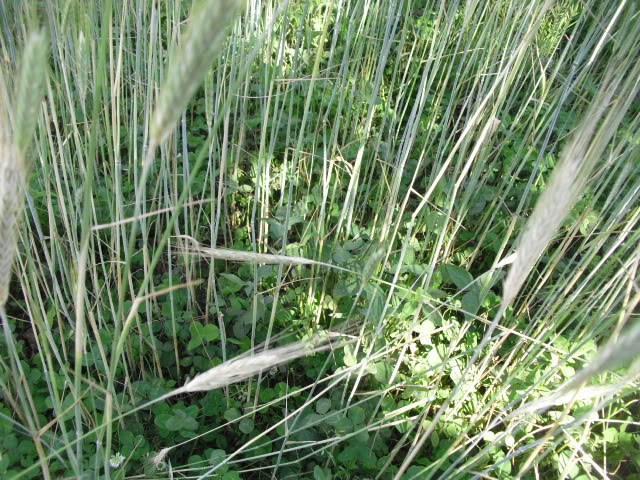
Another unimproved field with Alice white and Alta Swede Mammoth Red Clover in still standing winter rye.
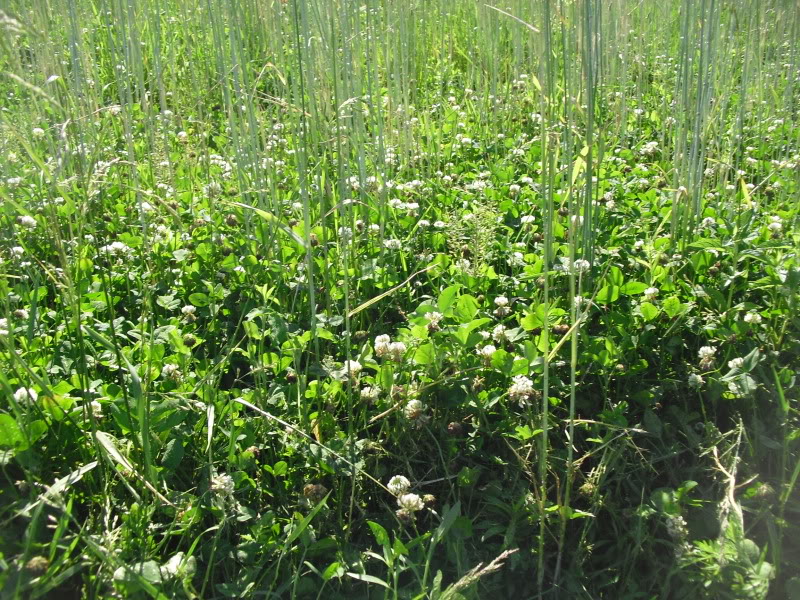
Here is some Alta Swede red Clover up close and one thing is noticably missing...flowers!! Alta Swede has two very distinct advantages for plotters, the first being it is dirt cheap and the second is that it is a "one cut clover" so unlike other red clovers it doesn't flower until much later.
Alta Swede stays tender and attractive well into the summer without clipping making it perfect to fall seed and then till under the next summer for brassicas or leave it til fall and repeat the fall rye planting again.

The Alice clover is flowering but white clover seldom gets tall and rank like red clovers so it's not imperative that it be clipped and Alice does well for me on poor unimproved clay soils allowing me to use it to add both nitrogen and biomass to the soil when I till it under.
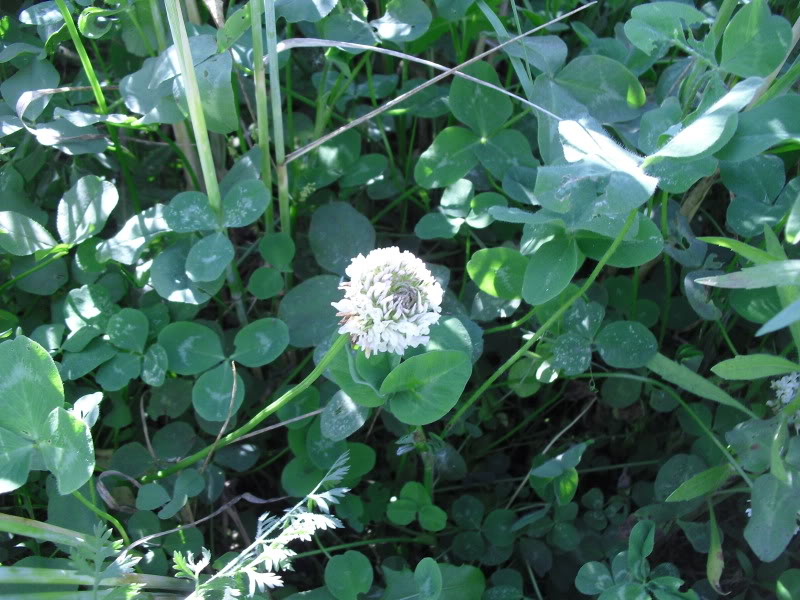
Some of you may wish to use a mix of Alice white and Alta Swede Red clovers in your fall plantings with perhaps 2-4 of Alice and 6-8 of Alta Swede combined.
Welter Seed is a great place to look over various clover types, read about the attributes and compare prices. All of their clover seed is pre-inoculated and they will sell it by the pound with a $3 handling charge for amounts under 25#'s.
Welter Seed - Clover seed
Check locally to save on shipping and handling charges but often local sources have only generic clovers that may not have the same attributes (such as being a one cut clover)
Regardless...add clovers suited for your area to your fall winter rye planting and you and your deer will reap the benefits the following summer...
I am planting 60 #'s WR, 80#'s Oats, 30 #'s AWP pack and over seed with 10#'s red, white clover is that mix ok?
That will work just fine! You can go higher on the peas and you can add cowpeas or even some left over soybean seed to the mix.
Deer will lap all of that up quickly and of course the cowpeas or soybeans would freeze off at the first killing frost, so it depends on if you want early or late (or both) season attractions.
Just worried it will get to high and deer won't like it. Then again, the plots are small and they may keep it mowed down too.
What happens if it does get too high and the overseed starts to grow? What do you do to the too high stuff? (I live in Zone 8 in the south)
Planting too early is a big concern and more so on the south because plants that get too tall will quickly become unpalatable.
I would plant later in September or stagger plantings and clip off any (and overseed) any that gets too tall.
Winter rye will grow rapidly and I have planted in October (with frost only days later) and had grazing by the end of the month so it gives you lot's of options.
Looks for Wrens Abruzzi rye in the south, it is adapted to your area and will perform better then northern ryes in your area.
Hancock Seed is just one place that carries Wrens but check locally first.
Here are a few more pics and thoughts about adding clovers to rye in the fall.
This field actually would grow nothing when we started and still has had nothing added in the way of fertilizer or lime (that wil be added this year.
Despite that the rye and Alice white clover did very well!

Another unimproved field with Alice white and Alta Swede Mammoth Red Clover in still standing winter rye.

Here is some Alta Swede red Clover up close and one thing is noticably missing...flowers!! Alta Swede has two very distinct advantages for plotters, the first being it is dirt cheap and the second is that it is a "one cut clover" so unlike other red clovers it doesn't flower until much later.
Alta Swede stays tender and attractive well into the summer without clipping making it perfect to fall seed and then till under the next summer for brassicas or leave it til fall and repeat the fall rye planting again.

The Alice clover is flowering but white clover seldom gets tall and rank like red clovers so it's not imperative that it be clipped and Alice does well for me on poor unimproved clay soils allowing me to use it to add both nitrogen and biomass to the soil when I till it under.

Some of you may wish to use a mix of Alice white and Alta Swede Red clovers in your fall plantings with perhaps 2-4 of Alice and 6-8 of Alta Swede combined.
Welter Seed is a great place to look over various clover types, read about the attributes and compare prices. All of their clover seed is pre-inoculated and they will sell it by the pound with a $3 handling charge for amounts under 25#'s.
Welter Seed - Clover seed
Check locally to save on shipping and handling charges but often local sources have only generic clovers that may not have the same attributes (such as being a one cut clover)
Regardless...add clovers suited for your area to your fall winter rye planting and you and your deer will reap the benefits the following summer...
dbltree
Super Moderator
So...after planting cover crops in the brassica plots (that will be plowed under for a fall planting of winter rye/peas/radish and clover)...which one do deer seem to prefer?
The first "sample" so to speak comes from these strip plots where the standing winter rye is chocked full of white and red clover so der are literally wading in lush food sources.
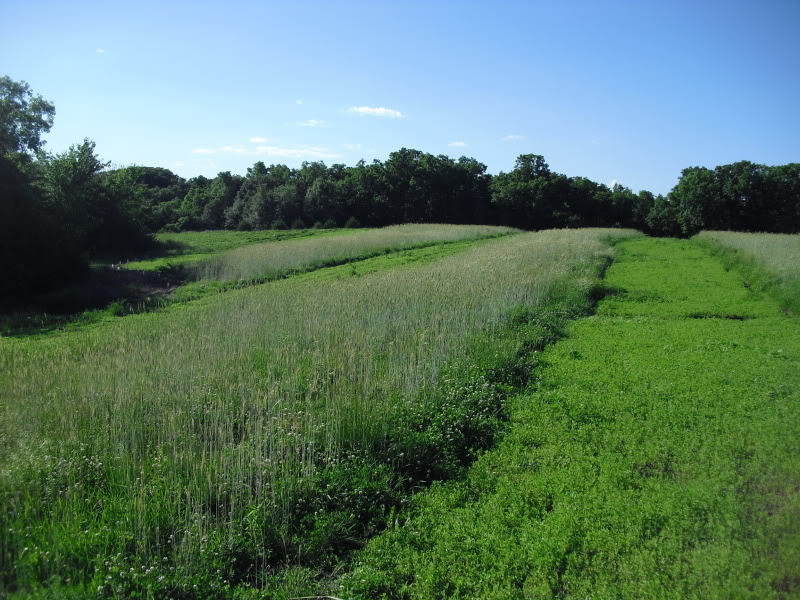
With Crimson, Berseem and Chickling Vetch to choose from among the planted cover crops...Berseem at the moment is the clear preferred choice on this farm and the lush young berseem is being heavily grazed.
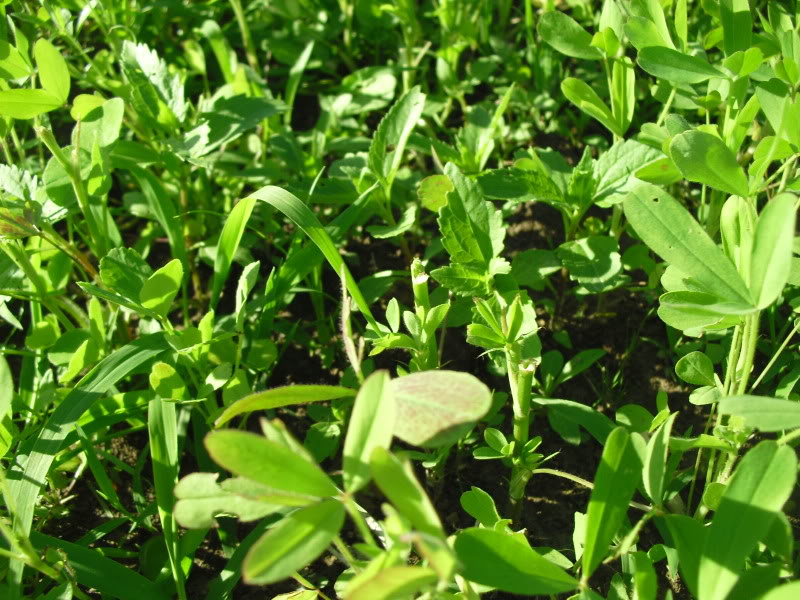

The crimson Clover is lush and beautiful but as of yet I could find no evidence of grazing?
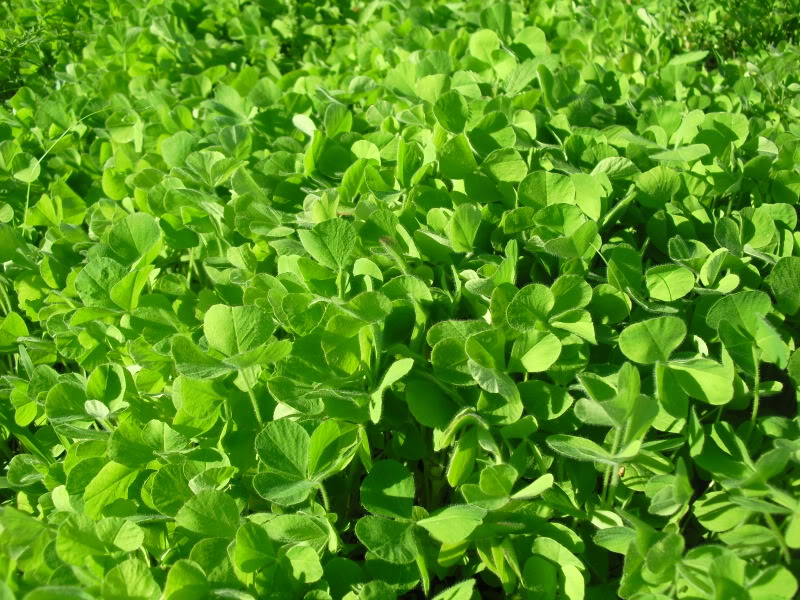
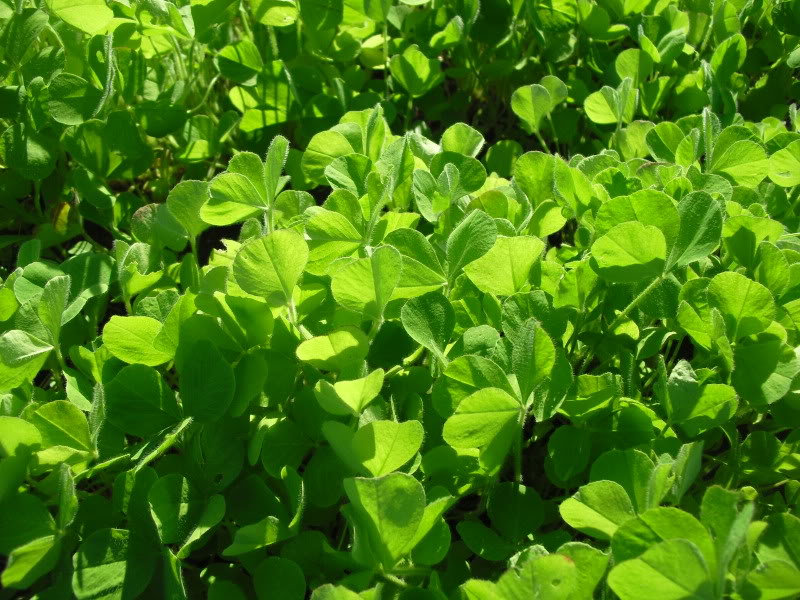
The Chickling Vetch is flowering already and because of it's somewhat odd shaped leaves it is somewhat difficult to be certain of grazing?
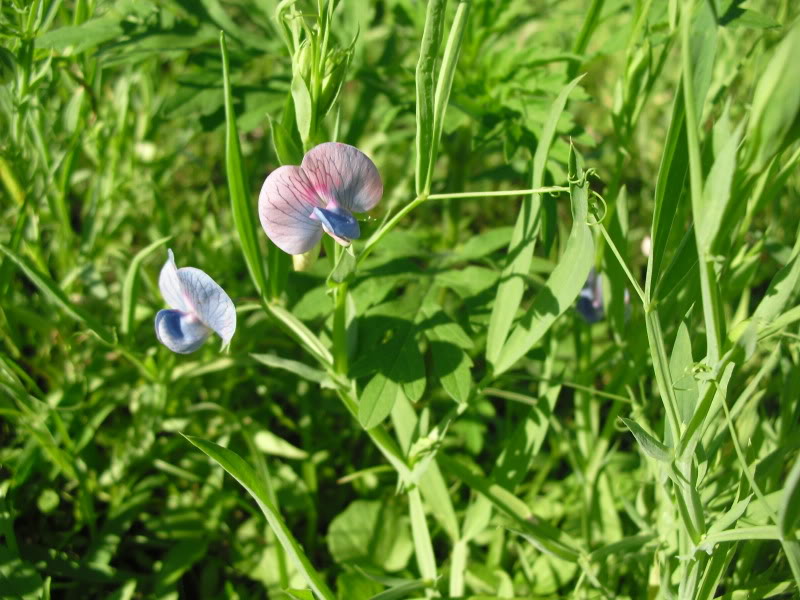

Often cover crops are not fertilized but here's an example of where I took a pass down one side with pel lime and 6-24-24 while fertilizing adjacent clover plots. The fertilizer willwork better if PH is at proper levels and the cover crops will work harder if they have proper fertility levels.
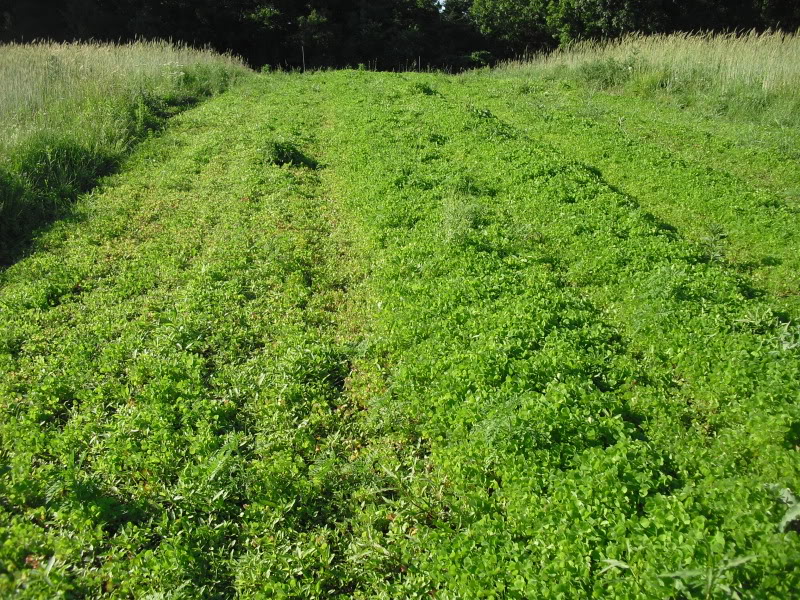
Each cover crop has it's own advantages and attributes so landowners may need to do some comparing and testing of their own to decide which might be best for them. In this case adding biomass and nitrogen is Job 1 because we already have plenty of top quality clover forage, still if there is a cover crop that deer prefer that would just be icing on the cake...
Welter Seed has a great slection of a number of cover crops and great descriptions of each as well.
The first "sample" so to speak comes from these strip plots where the standing winter rye is chocked full of white and red clover so der are literally wading in lush food sources.

With Crimson, Berseem and Chickling Vetch to choose from among the planted cover crops...Berseem at the moment is the clear preferred choice on this farm and the lush young berseem is being heavily grazed.


The crimson Clover is lush and beautiful but as of yet I could find no evidence of grazing?


The Chickling Vetch is flowering already and because of it's somewhat odd shaped leaves it is somewhat difficult to be certain of grazing?


Often cover crops are not fertilized but here's an example of where I took a pass down one side with pel lime and 6-24-24 while fertilizing adjacent clover plots. The fertilizer willwork better if PH is at proper levels and the cover crops will work harder if they have proper fertility levels.

Each cover crop has it's own advantages and attributes so landowners may need to do some comparing and testing of their own to decide which might be best for them. In this case adding biomass and nitrogen is Job 1 because we already have plenty of top quality clover forage, still if there is a cover crop that deer prefer that would just be icing on the cake...
Welter Seed has a great slection of a number of cover crops and great descriptions of each as well.
dbltree
Super Moderator
Because there are sometimes concerns about how much surface trash is ok and if it will be a problem, epecially when one has small equipment...I wanted to post these pics in this thread as well.
I disced down my standing winter rye and planted soybeans and milo having done not much more then "messed" it up a bit. When following rye with July brassicas the rye will be more mature and easier to disc down with a small ATV type disc.
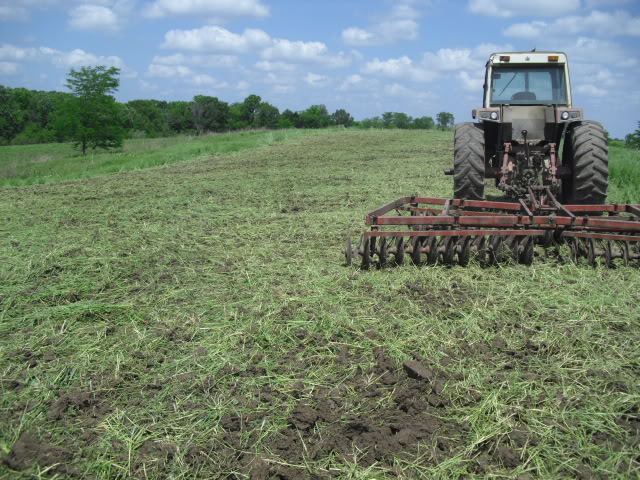
and now the crops are coming up thru the nice rye straw mulch just fine
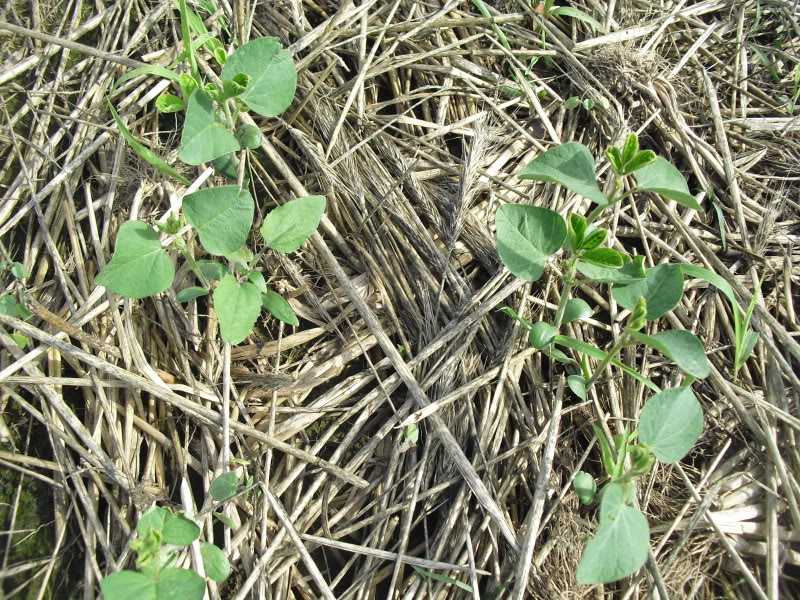
As I have mentioned before, most farmers using winter rye as a cover crop simply roll it flat with no tillage at all and then no-till into it, so any discing at all will bring up enough soil to do the trick for conventional plantings

A disc works well to both flatten the rye and slightly mix it with the soil surface and in my case I go over it a couple times. If your sowing small seeds like brassicas next month, disc it well, cultipack, broadcast seed and re-cultipack. It's also possible in small plots to simply just broadcast brassica seed into the standing rye without any thing more then a handseeder for equipment.
In cases with no tillage one will need to broadcast urea, (or ammonium nitrate or sulfate) just ahead of a minimum 1/2" of rain....
If you have a no-till drill you can often just drill right into the rye straw using the drill itself to flatten the rye somewhat and just no-till plant.
One thing you don't want to attempt is using a tiller on standing rye...it will wrap up in the teeth and you'll be cussin' yourself for trying. If using a tiller chop the rye up with a bushhog type mower first after the rye has matured and turned brown or straw like.
Everyone has different tillage equipment and resources to work with but all of it will work on winter rye (or any mature cereal grain) if used at the right time.
Done properly it's easy as pie and you'll have a wonderful soil building mulch when your done....
I disced down my standing winter rye and planted soybeans and milo having done not much more then "messed" it up a bit. When following rye with July brassicas the rye will be more mature and easier to disc down with a small ATV type disc.

and now the crops are coming up thru the nice rye straw mulch just fine

As I have mentioned before, most farmers using winter rye as a cover crop simply roll it flat with no tillage at all and then no-till into it, so any discing at all will bring up enough soil to do the trick for conventional plantings

A disc works well to both flatten the rye and slightly mix it with the soil surface and in my case I go over it a couple times. If your sowing small seeds like brassicas next month, disc it well, cultipack, broadcast seed and re-cultipack. It's also possible in small plots to simply just broadcast brassica seed into the standing rye without any thing more then a handseeder for equipment.
In cases with no tillage one will need to broadcast urea, (or ammonium nitrate or sulfate) just ahead of a minimum 1/2" of rain....
If you have a no-till drill you can often just drill right into the rye straw using the drill itself to flatten the rye somewhat and just no-till plant.
One thing you don't want to attempt is using a tiller on standing rye...it will wrap up in the teeth and you'll be cussin' yourself for trying. If using a tiller chop the rye up with a bushhog type mower first after the rye has matured and turned brown or straw like.
Everyone has different tillage equipment and resources to work with but all of it will work on winter rye (or any mature cereal grain) if used at the right time.
Done properly it's easy as pie and you'll have a wonderful soil building mulch when your done....
dbltree
Super Moderator
I noticed some surviving Austrian Winter Peas amonst the winter rye and clover this spring but deer seem to have little interest in them now as they do in the fall.
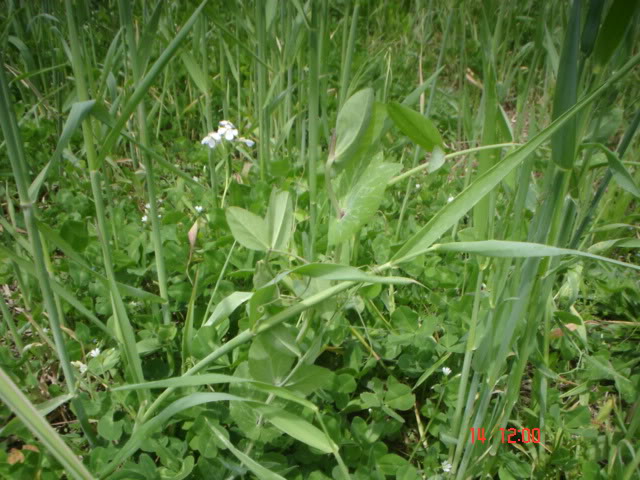
Winter rye is the cornerstone of my fall cereal grain planting but I would urge everyone to not overlook peas as an important addition to your fall planting.
After grazing on clover and alfalfa all summer, the sudden appearance of lush winter rye and sweet tender peas becomes a welcome change of pace for whitetails.
Peas are almost impossible for deer to resist and it is a rare landowner who has tried them that can find a single plant left by the end of season.
I have found that you can add upwards of 100#'s or peas per acre and deer will happily clean them up! The question as of late has been should you plant Austrian Winter Peas or the much less expensive field or forage pea?
ALL true peas (cowpeas are not peas but beans for instance) are very cold tolerant and like oats can be planted in late March when they often endure nights well below freezing.
When peas are planted in the fall (again...like common oats) they will survive very cold weather in most of the midwest however it will be rare that deer will allow them to make it that long.
Peas are the candy in the mix and forage peas are available from places like Welter Seed or Albert Lea seed for $20-25 a bag while AWP's commonly cost double that. Either will work equally well with deer showing no preference for one over the other in my tests.
Some folks use fall planted soybeans for the same reasons but soybeans are A) expensive and B) absolutely not cold tolerant meaning they will likely freeze off the first week or two of season.
I mix the peas right with the winter rye, broadcast them on, lighty till, disc or drag them in and then cultipack (or use a drill if you have one)
While any one of the crops in my mix will work alone to attract and feed whitetails in the fall, together they can attract and hold whitetails on your property literally year around. Combined they provide high quality attractive forage, build up your soil and lower your fertilizer and herbicide needs.

Winter rye is the cornerstone of my fall cereal grain planting but I would urge everyone to not overlook peas as an important addition to your fall planting.
After grazing on clover and alfalfa all summer, the sudden appearance of lush winter rye and sweet tender peas becomes a welcome change of pace for whitetails.
Peas are almost impossible for deer to resist and it is a rare landowner who has tried them that can find a single plant left by the end of season.
I have found that you can add upwards of 100#'s or peas per acre and deer will happily clean them up! The question as of late has been should you plant Austrian Winter Peas or the much less expensive field or forage pea?
ALL true peas (cowpeas are not peas but beans for instance) are very cold tolerant and like oats can be planted in late March when they often endure nights well below freezing.
When peas are planted in the fall (again...like common oats) they will survive very cold weather in most of the midwest however it will be rare that deer will allow them to make it that long.
Peas are the candy in the mix and forage peas are available from places like Welter Seed or Albert Lea seed for $20-25 a bag while AWP's commonly cost double that. Either will work equally well with deer showing no preference for one over the other in my tests.
Some folks use fall planted soybeans for the same reasons but soybeans are A) expensive and B) absolutely not cold tolerant meaning they will likely freeze off the first week or two of season.
I mix the peas right with the winter rye, broadcast them on, lighty till, disc or drag them in and then cultipack (or use a drill if you have one)
While any one of the crops in my mix will work alone to attract and feed whitetails in the fall, together they can attract and hold whitetails on your property literally year around. Combined they provide high quality attractive forage, build up your soil and lower your fertilizer and herbicide needs.
Winter rye 50-80#'s per acre (56#'s = a bushel)
Spring oats 80-120#'s per acre (32#'s = a bushel)
Austrian Winter Peas 20-80#'s per acre (4010 or 6040 field peas will work fine for 1/2 the price)
Red Clover 8-12#'s per acre or white clover at 6#'s per acre
Groundhog Forage Radish 5#'s per acre
dbltree
Super Moderator
"Rolling Rye"...sure beats trying to disc it under if you have small equipment! For those that did not add clover to their fall rye planting, rolling it flat and no-till planting or even broadcasting seed into the straw mulch is an option to be considered!
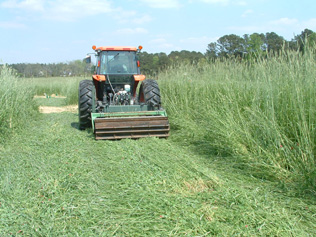
Famers have developed special "crimper/rollers" but a cultipacker will do the trick for small plotters and this link has more thoughts on rolling rye: Roller in the rye: Managing cover crops with rolling and crimping techniques
We already know about the great attributes of winter rye for attracting and feeding whitetails all winter but there is so much more as this article explains: Cereal Rye for Cover Cropping
Now I prefer to sow clover with rye and not mess with it til I need to till under the clover for the next crop, usually in mid to late summer when the rye has matured. That requires equipment heavy evenough to actually disc or till in the clover and rye however so plotters with very small equipment need to adapt and use herbicides to kill cover crops rather then fight all of the crop on the surface.
Here are some thought on dealing with rye alone:
I use lower rates of winter rye (50-80#'s) and add common oats to increase fall grazing so that the rye is not so thick and difficult to deal with in the spring but those with small equipment can easily kill rye in clover with clethodim when it is 10-12" tall in the spring or with 41% glyphosate if the rye is planted alone.
I either have equipment heavy enough to disc the rye (in effect rolling it) or I wait until it has matured and is straw like and mow/shred it before using my tiller. A plow also works great but leaving the straw on the surface will build soil oraginc matter much faster!
More about Cereal Rye
More on rolling rye for natural weed control with Q&A in a forum: Crop Rolling

More then one way to skin a cat my Grandfather used to say...and such is the case when dealing with winter rye with small equipment...what could be easier then rolling it into a nice straw mat and notilling or broadcasting seed into the untilled straw!:way:

Famers have developed special "crimper/rollers" but a cultipacker will do the trick for small plotters and this link has more thoughts on rolling rye: Roller in the rye: Managing cover crops with rolling and crimping techniques
We already know about the great attributes of winter rye for attracting and feeding whitetails all winter but there is so much more as this article explains: Cereal Rye for Cover Cropping
Now I prefer to sow clover with rye and not mess with it til I need to till under the clover for the next crop, usually in mid to late summer when the rye has matured. That requires equipment heavy evenough to actually disc or till in the clover and rye however so plotters with very small equipment need to adapt and use herbicides to kill cover crops rather then fight all of the crop on the surface.
Here are some thought on dealing with rye alone:
Kill before it matures
Tilling under rye usually eliminates regrowth, unless the rye is less than 12 inches tall (Sarrantonio, 1994; UC SAREP Cover Crop Resource Page).
Rye often is plowed or disked in the Midwest when it’s about 20 inches tall (Oekle et al., 1990). Incorporating the rye before it’s 18 inches high could decrease tie-up of soil N (Sarrantonio, 1994; UC SAREP Cover CropsResource Page). In Pennsylvania (Duiker and Curran, 2005) and elsewhere, kill at least 10 days before planting corn.
For best results when mow-killing rye, wait until it has begun flowering. A long-day plant, rye is encouraged to flower by 14 hours of daylight and a temperature of at least 40°F. Mow-kill works well in the South after rye sheds pollen in late April (Dabney, 1996). If soil moisture is adequate, you can plant cotton three to five days after mowing rye when row cleaners are used in reduced-tillage systems. Some farmers prefer to chop or mow rye by late boot stage, before it heads or flowers. “If rye gets away from you, you’d be better off baling it or harvesting it for seed,” cautions southern Illinois organic grain farmer Jack Erisman (Bowman, 1997).
He often overwinters cattle in rye fields that precede soybeans. But he prefers that soil temperature be at least 60°F before planting beans, which is too late for him to no-till beans into standing rye. “If rye is at least 24 inches tall, I control it with a rolling stalk chopper that thoroughly flattens and crimps the rye stems,” says Pennsylvania vegetable grower Steve Groff. A heavy duty rotavator set to only 2 inches deep does a good job of tilling rye, says Richard de Wilde, Viroqua, WI. Can’t delay a summer planting by a few weeks while waiting for rye to flower? If early rye cultivars aren’t available in your area and you’re in Zone 5 or colder, you could plow the rye and use secondary tillage.
Rye is the best cool-season cover crop for scavenging N, typically carrying 25 to 50 lb N/ac over to spring.
I use lower rates of winter rye (50-80#'s) and add common oats to increase fall grazing so that the rye is not so thick and difficult to deal with in the spring but those with small equipment can easily kill rye in clover with clethodim when it is 10-12" tall in the spring or with 41% glyphosate if the rye is planted alone.
I either have equipment heavy enough to disc the rye (in effect rolling it) or I wait until it has matured and is straw like and mow/shred it before using my tiller. A plow also works great but leaving the straw on the surface will build soil oraginc matter much faster!
More about Cereal Rye
Also called: cereal rye, winter rye, grain rye
Type: cool season annual cereal grain
Roles: scavenge excess N, prevent erosion, add organic matter, suppress weeds
Mix with: legumes, grasses or other cereal grains
More on rolling rye for natural weed control with Q&A in a forum: Crop Rolling

More then one way to skin a cat my Grandfather used to say...and such is the case when dealing with winter rye with small equipment...what could be easier then rolling it into a nice straw mat and notilling or broadcasting seed into the untilled straw!:way:
dbltree
Super Moderator
Paul, As July 25-30 is ideal time to seed brassicas, when do you ideally like to seed a rye, oats, pea blend?
Any time from mid July to early August for seeding brassicas and the last week of August thru Labor Day for the cereal grain mix.
Earlier for northern Iowa/WI, slightly later for southern Iowa/MO
I have 16ac. that will be planted in NWSG next spring. It was supposed to be planted this spring but it is way too wet here in Southern Il. Can I put that in rye this fall to suppress the weeds and then kill it off in the spring and drill my NWSG into that? Will the rye keep the grasses from germinating?
Thanks,
Trev
Thanks,
Trev
magnus
PMA Member
I'd say negative on that. I think you want as clean as seed bed as possible, which I think would best be accomplished by spraying w/ Roundup and 2,4-D right after the first frost. In a perfect world, even hit it with that same combo before then --- like now --- so chances of any weeds/grasses slipping through are minimized. Anything/everything you can do to minimize competition for your NWSG's next Spring needs to be your goal for this season. Those are my thoughts. ---but I am far from an expert. Although I did stay at a Holiday Inn Express when I was in Ottumwa!!
